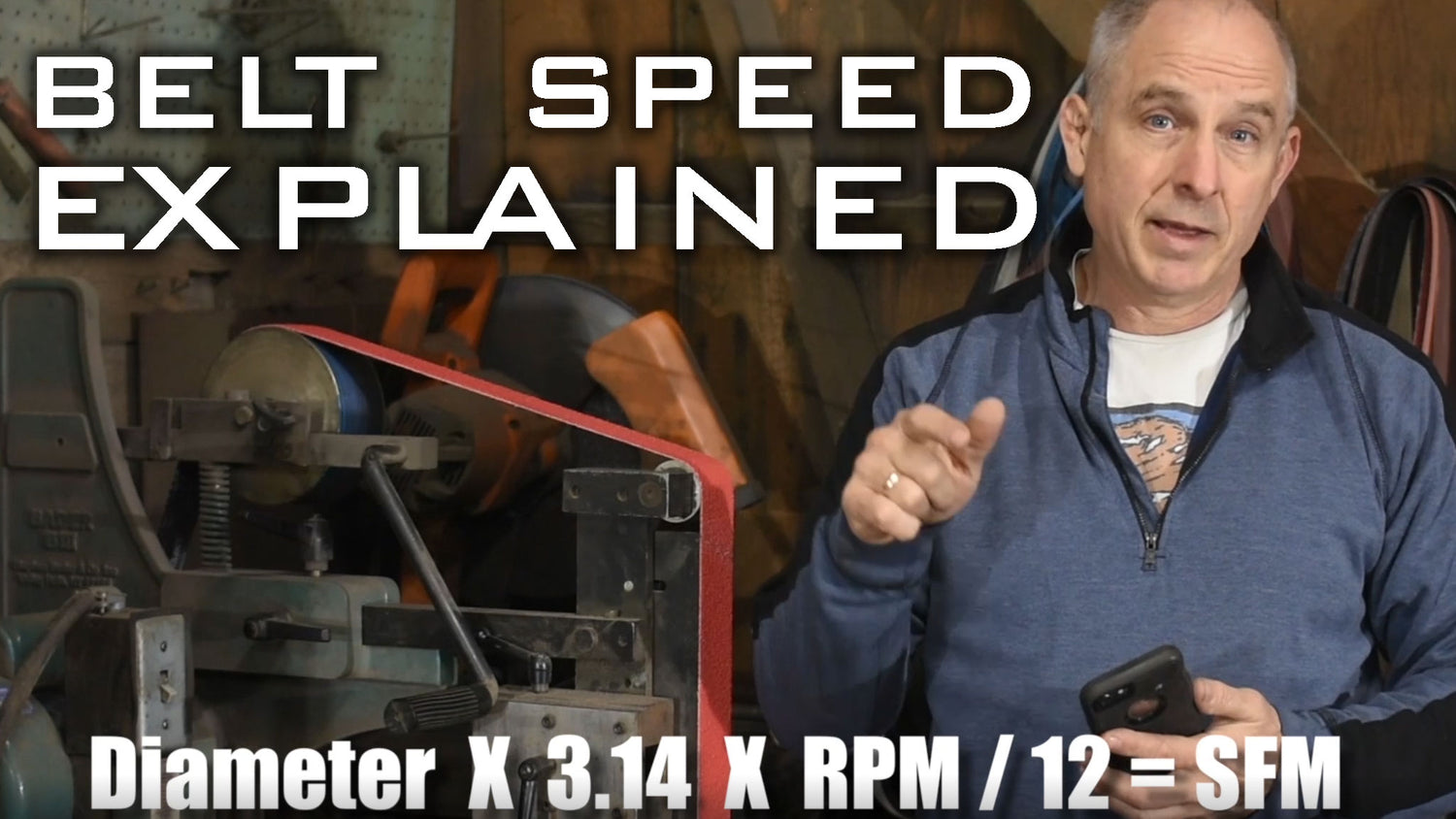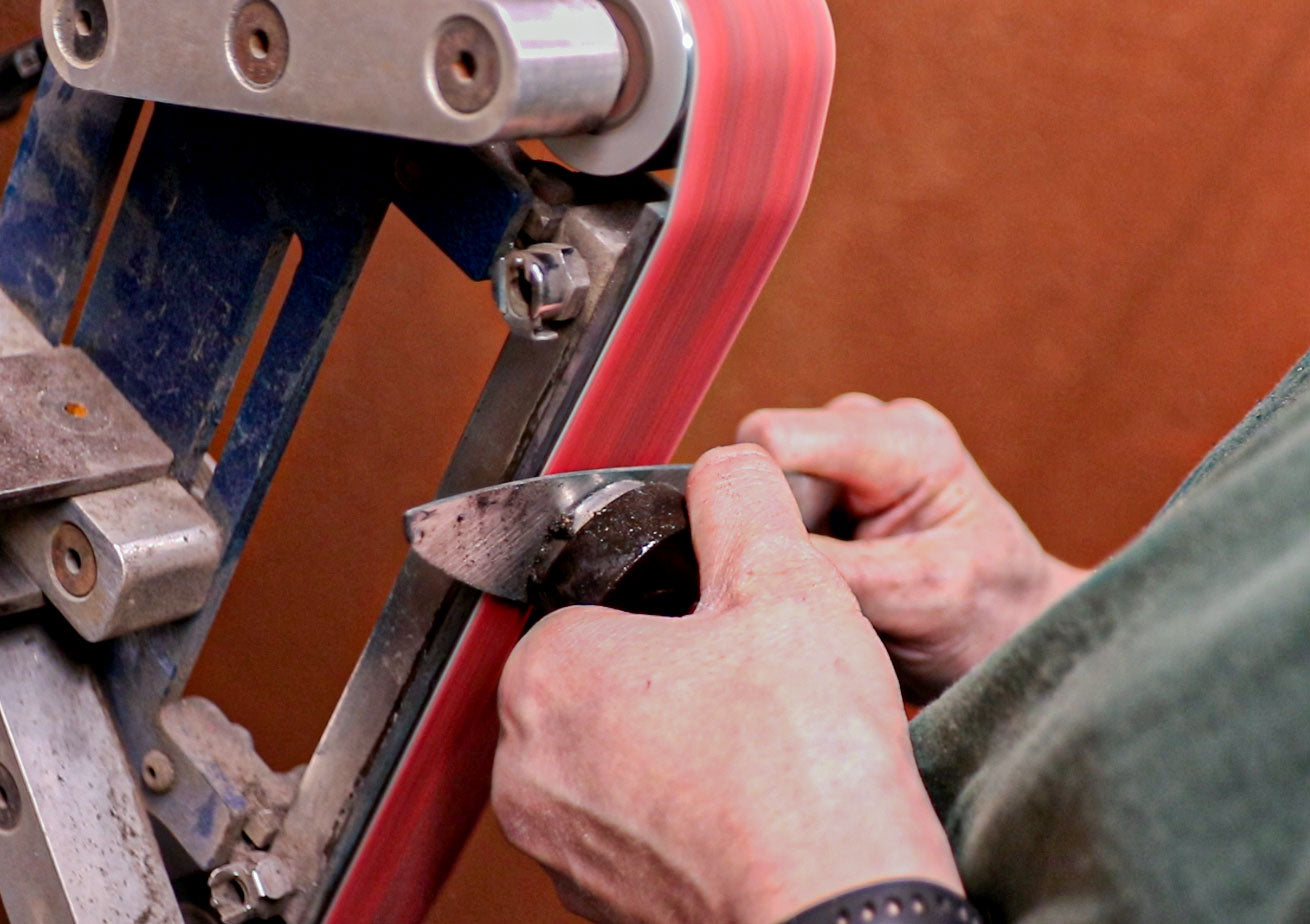WHAT IS THE RECOMMENDED SPEED FOR A SANDING BELT ON A BELT GRINDER?
The speed that your sanding belt is running on your belt sander can affect the workpiece as well as the belt itself. Running your belt sander at the right speed can make all the difference for your finish as well as the longevity and performance of the sanding belt. Before we get into what belt speeds are recommended for different materials such as aluminum oxide or ceramic, we first need to get into some basic math. RPM's unfortuntunately are not specific or standardized enough to be useful for knifemakers to determine what speed is right for their belt sander / belt type.
SFPM AND WHAT IT MEANS
Surface feet per minute or SFPM is an simple math equation that is as follows:
SFPM = RPM X .262 X Wheel Diameter
So as an example...the most common belt sander size is a 2" x 72" so we will take a 2,000 RPM motor with a 4" drive wheel and the final math equation will look like this:
(2,000 X 0.262) x 4" = 2096
Once you figure out how fast your particular machine is spinning you can thus alter or adjust your machine proportionally.
WHAT SPEED DO WE RECOMMEND FOR CERAMIC BELTS?
We here at combat abrasives find that ceramic sanding belts perform best in the 3600 - 4500 SFPM area depending on the grit. A general rule of thumb is that the coarser the grit IE 36 grit the faster you would run, meaning closer to the 4500 SFPM area. When you get up to to 80 grit and 120 grit we recommend running the ceramic belts closer to 3,600 SFPM. Although we will say, running a 36 grit at a more controllable speed of 3,600 if you are a beginner is definitely more recommended.
Another thing to keep in mind here is the material being sanded. If you are sanding steel's such as 1084, 1095, 80CRv2, Tool Steel etc...we recommend sticking to the higher/faster end of the spectrum. WHen sanding woods, micarta or plastics like G10, you want to sand a little slower so as to not burn the work pieces or handle material.
2" X 72" SANDING BELT RECOMMENDED SURFACE SPEEDS BY MATERIAL BEING SANDED:
Cast Iron & Carbon steels - 3500 - 4500 SFPM
Copper & brass - 3500 - 4000 SFPM
Stainless Steel, Tool Steel - 3500 - 4000 SFPM
Aluminum & Zinc - 3000 - 400 SFPM
Wood (any) - 2500 - 3000 SFPM
Titanium & Titanium Alloys - 2000 - 3000 SFPM
Plastics, G10, Composites - 2000 - 3000 SFPM
Hard & Hardened Steels - 1500 - 2500 SFPM
WHAT IS THE RECOMMENDED SANDING SPEED FOR ALUMINUM OXIDE BELTS?
First using the equation given above, find out how fast your machine is spinning first.
Coarse sanding with aluminum oxide belts in grits 36, 40 or 60 grit you can typically sand between 3,000 and 4,000 SFPM, slightly slower than the more heavy duty Ceramic or zirconia sanding belts. Where it is really important to control your speed is when finish sanding using an aluminum oxide belt. Finish sanding is a more finesse technique that requires precision, skill and a lower belt speed as you are trying to line up the symmetry of the bevel, edge or handle. Faster belting speeds when sanding in the finer grits is completely unnecessary and in fact more damaging to the workpiece. We recommend sanding in the 1,200 - 2,000 SFPM range when finishing sanding your knife. While we recommend this speed, it is important to note that what is comfortable to you is the absolute most important thing.




Leave a comment
This site is protected by hCaptcha and the hCaptcha Privacy Policy and Terms of Service apply.